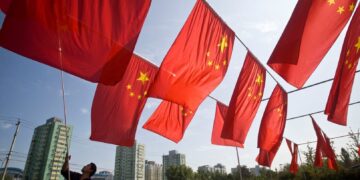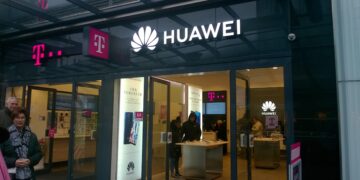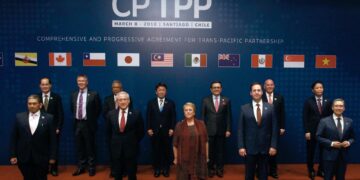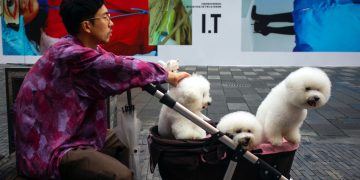In the following excerpt from Edward Tse’s book China’s Disruptors: How Alibaba, Xiaomi, Tencent, and Other Companies Are Changing the Rules of Business, the founder and CEO of Gao Feng Advisory Company discusses current changes in the Chinese business environment:
Writing about the fast-changing computing and information-technology industries of the 1990s, Shona L. Brown, a consultant and ex–Google executive, and Kathleen M. Eisenhardt, a professor at Stanford University, coined the phrase “competing on the edge.” That phrase, and much of the behavior associated with it, can be applied to China’s business environment of today. Brown and Eisenhardt saw the information and communication technology industries of the 1990s as occupying an intermediate state between order and chaos, with change occurring in unprecedented and unpredictable ways, boundaries between previously separate industries erased, and hypercompetition leading to the fast rise and fall of companies. They argued that under these conditions, business strategy had three principal characteristics.
First, advantage can only be temporary. For companies to succeed, they must continuously generate new sources of advantage. Change, rather than being viewed as a threat to their existing business, should instead be treated as the key source of new opportunities for growth.
Second, as a result of advantage being temporary, strategy will have to be diverse and emergent, and defy simple generalization. Companies must always consider a broad array of options, with resulting actions likely to involve a diverse collection of loosely linked moves whose overall direction is at best only semi- coherent. Goals and plans will always be shifting in accordance with the opportunities and constraints of the business environment. And third, reinvention will lie at the heart of all of a company’s activities. In its constant search for new ways to create value, innovation of processes as well as products will be crucial, meaning that organizations will have to constantly change how they operate as well as what they make. Efficiency will count for less than the ability to generate and test new ideas, though companies will also have to make sure they don’t waste resources, especially because reliable long-term sources of profit will be rare.


Almost all of China’s leading entrepreneurial companies exemplify these three trends. Because China’s markets are at multiple stages of development, they know that while in one market a product may soon need to have its features overhauled and upgraded as consumers there become richer, there are certainly other markets the product should be “stretched” to. White-goods maker Haier, for example, has constantly found new niches for its products by adding features—making washing machines that could rinse vegetables, aimed at rural markets, or shrinking its fridges to make them appeal to students living in cramped accommodations. Telecoms equipment maker Huawei and IT giant Lenovo operate similarly, constantly iterating and launching new models of their smartphones, tablets, and other products. All these companies want to be around for the long haul, but they also know that tests and products must be aimed at the immediate future because the period beyond that is unknowable. Alibaba continues to jump into new areas of business where its current capabilities have to be extended. Examples include adapting the model of its B2B business, Alibaba.com, to create the C2C enterprise Taobao; bringing together its business and consumer models from Alibaba.com and Taobao to launch Tmall; using the knowledge of its business customers to start a business lending money to small companies; and moving into consumer finance with Alipay.
Given the rate of market change, companies have to set a rhythm and tempo around the number of new products and services they offer, refreshing and launching them in accordance with the tempo and rhythm of the market. They must pay close attention to the order and timing in which they do things. While moving too slowly will almost inevitably mean allowing a competitor to steal a march, moving too fast can also create problems, especially if a market has yet to reach the right stage of development for a product or service.
In terms of organization, to guard against being locked into outdated competitive models, businesses must continuously realign how they operate and what they produce with emerging opportunities. They need just enough structure to keep things from flying apart. Since success will come from being able to move nimbly and fast, strategy cannot be driven from the top down. Instead, it should be driven from the business unit level up.
All these companies combine reiteration and reinvention. Tencent has moved from computer-based messaging to online games and then to mobile messaging. But WeChat’s roots also clearly extend back to its original hit, the QQ instant-messaging program; its stream of new features taps into the need for constant iteration to keep consumers in search of novelty happy. The giveaway model with paid-for add-ons, developed for QQ, was extended to online games; that same model, complete with games, is now a core part of Tencent’s mobile strategy.
Overall, the outcome is that strategy is diverse—obviously so at Alibaba and Tencent, but also at businesses such as Geely, China’s leading private car maker, where Li Shufu is simultaneously maintaining the separation between Volvo’s global and Chinese businesses, keeping a gap between those two businesses and his Geely operations, and preparing for a possibly very different future with his electric- vehicle acquisitions. This approach is well described by Haier’s CEO, Zhang Ruimin: “The CEO of a company should seek balance between systems, rules, and chaos. On the one hand, he should change with the world. But on the other, he should avoid chaotic changes and build an inner rule of changing.”
Reprinted from China’s Disruptors: How Alibaba, Xiaomi, Tencent, and Other Companies Are Changing the Rules of Business by Edward Tse with permission of Portfolio, an imprint of Penguin Publishing Group, a division of Penguin Random House LLC. Copyright (c) Edward Tse, 2015.
[author]Edward Tse is the founder and CEO of Gao Feng Advisory Company, a global strategy consulting firm with roots in China, and the former chairman for Greater China of Booz & Company. He has helped hundreds of multinational and Chinese companies develop and apply their strategies and has worked with the World Bank, the Asian Development Bank, and the Chinese government on issues related to state-owned enterprise reform. He is the author of The China Strategy, and articles in Harvard Business Review, strategy+business, South China Morning Post, and China Entrepreneur and has appeared on Bloomberg TV and the Fox Business Network. [/author]
(Photo by China’s Disruptors and Islandjoe via Flickr)






























